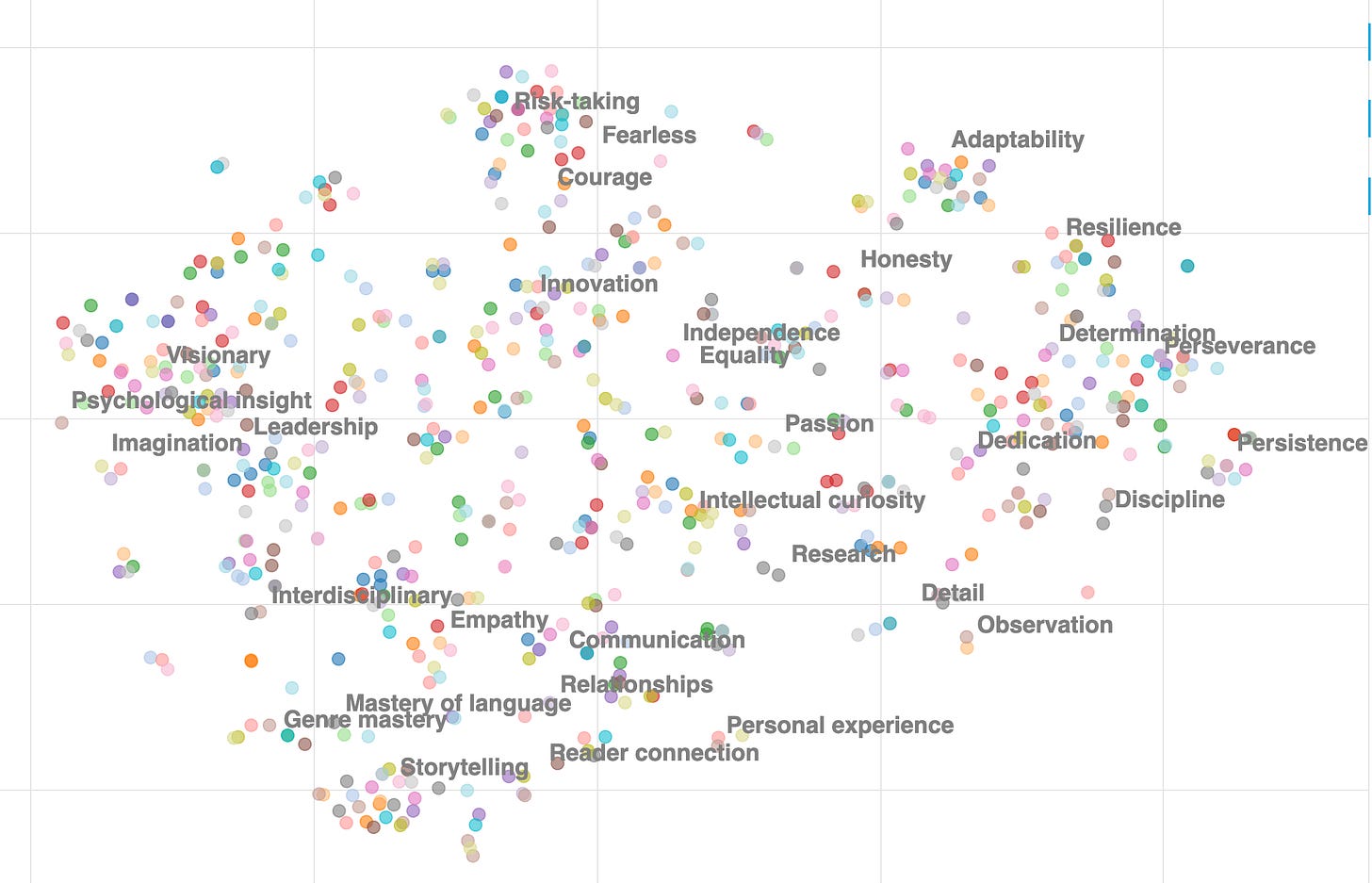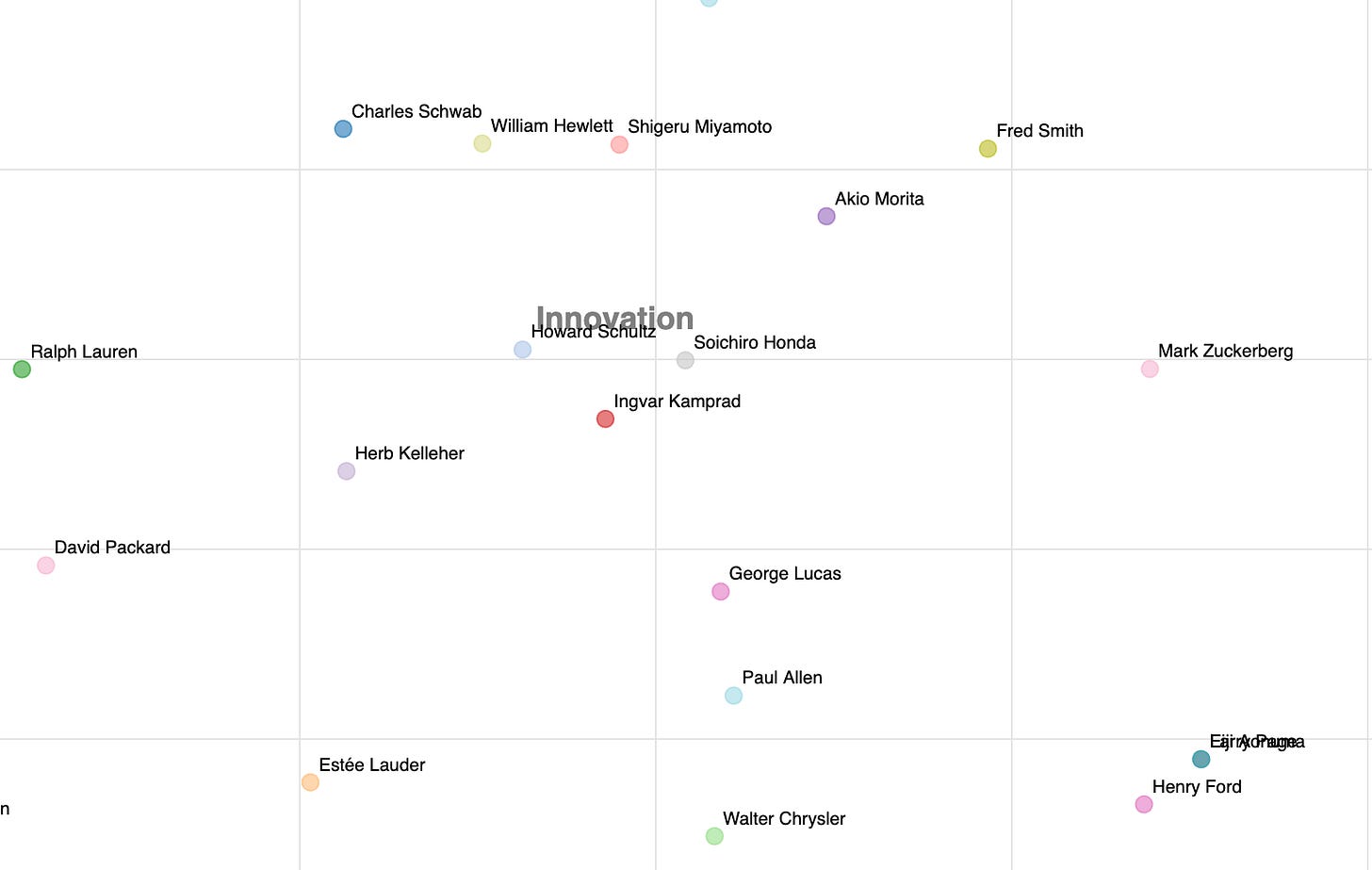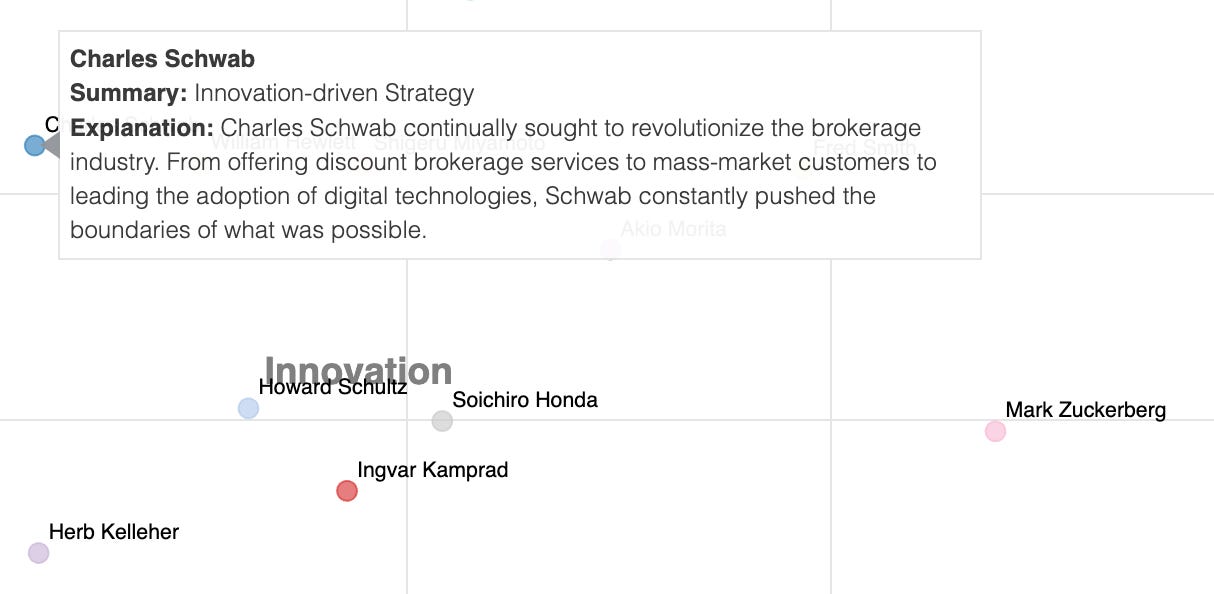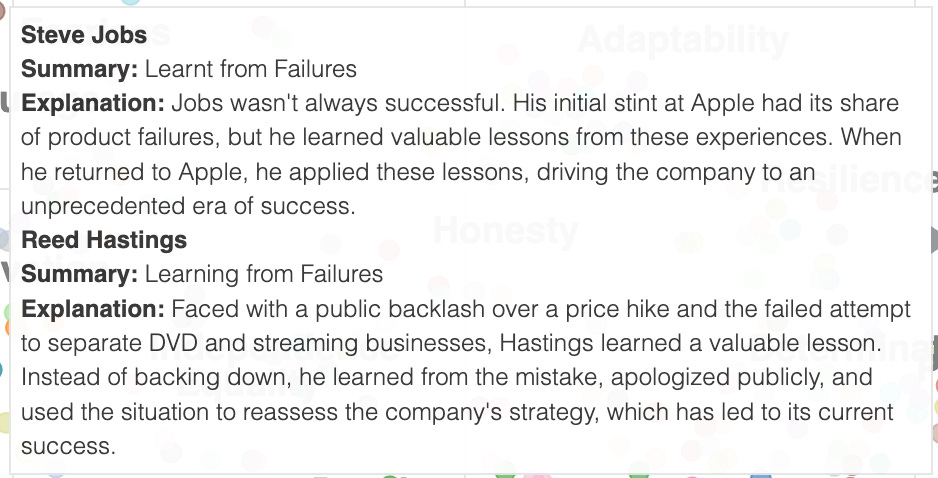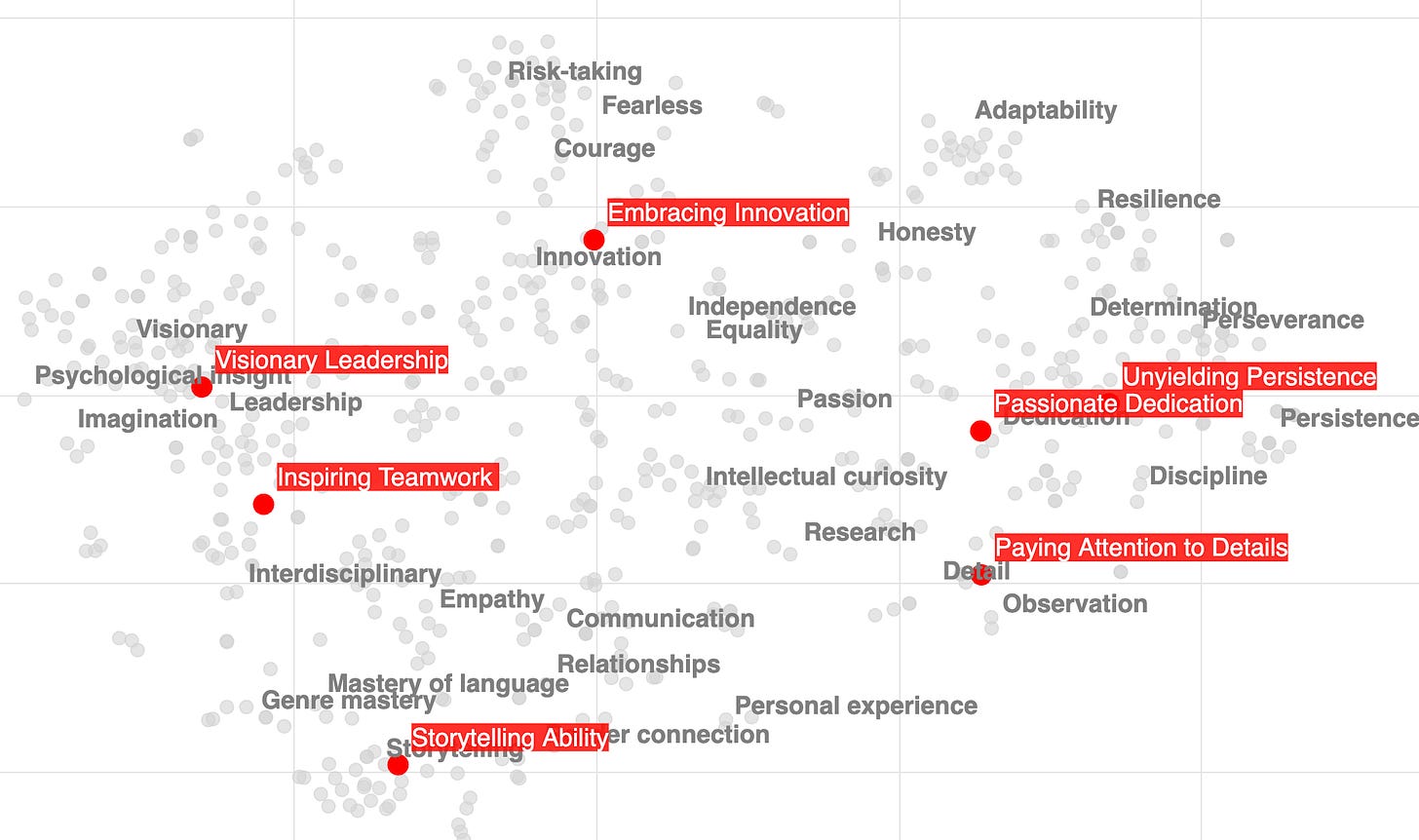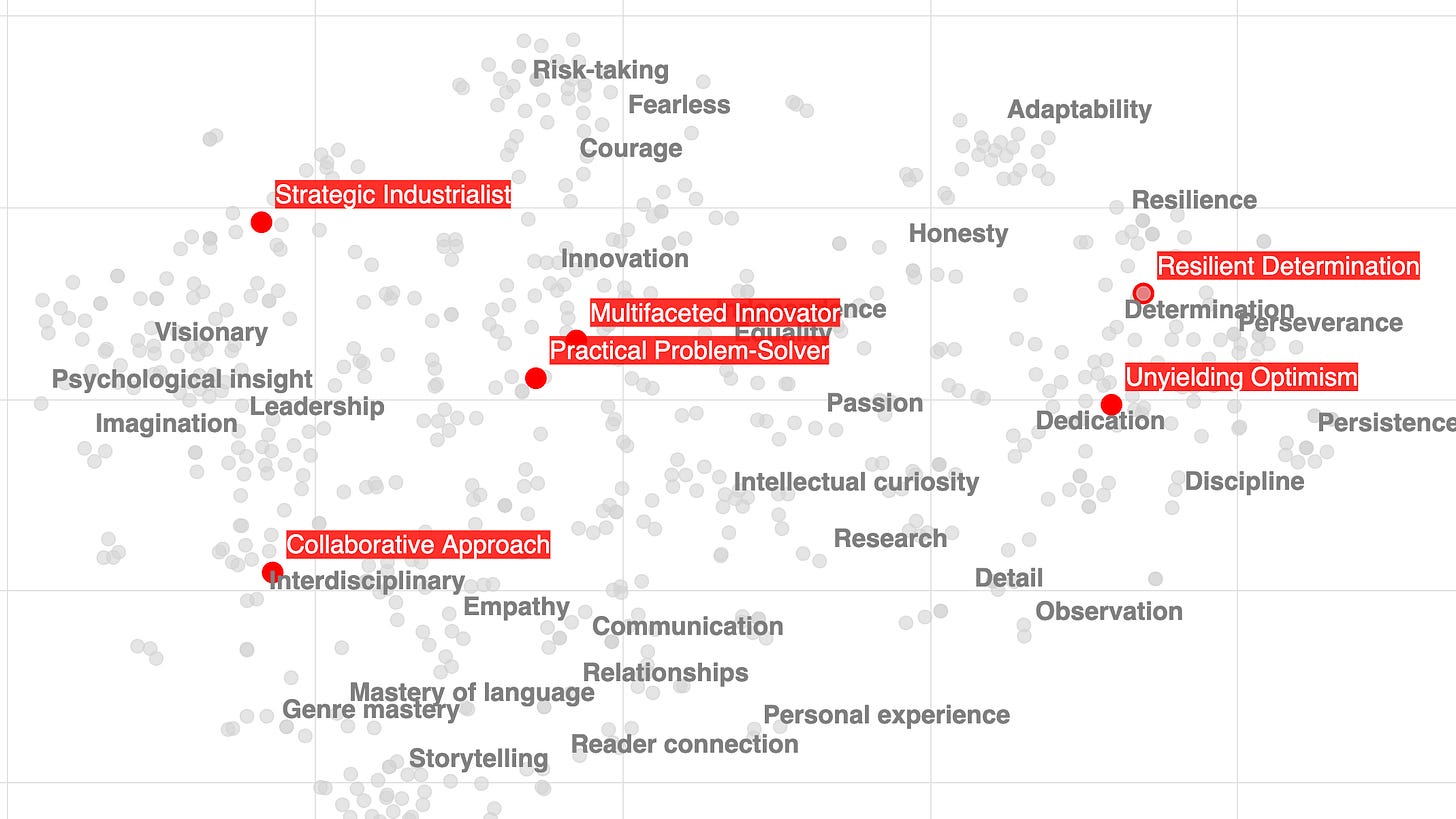Succeed Like... Walt Disney
AI-driven insights into how Disney became a titan
If you could use AI to find insights and lessons from the most successful people who ever lived, what secrets might you discover?
AI has the ability to cover more information in more depth than we ever can, but it doesn’t have the human ‘spark’ of insight to see what really matters. (For now, at least.)
But working together, human and AI intelligence in combination should be able to make the magic happen.
Let’s start with Walt Disney.
What made Disney such a creative and business powerhouse? What made him stand out?
The answer, at least to some extent, is here:
This chart was generated with AI, and it shows the skills and capabilities of Walt Disney and about 100 other very successful and creative people, from Agatha Christie to Ralph Lauren, clustered together by similarity. The labels show the most important areas — Honesty, Adaptability, Visionary, Observation and so on. About 1,000 individual AI requests are summarized in this one view.
In other words: It’s a map of what it takes to succeed.
If we zoom in and add some labels, we can see in more detail what’s going on. For example, we can see how many successful people cluster around the idea of Innovation:
In my view of this data, which I haven’t figured out the best way to share yet, I can see why each person was included, e.g. for Charles Schwab and Innovation:
Or Estee Lauder and Innovation:
Or we can see that Learning from Failure comes up as a key factor for both Steve Jobs and Reed Hastings:
All sorts of patterns are hiding here in plain sight.
But let’s get back to Disney. How does he show up on this map?
His dots are scattered amongst those shown in the views above, but we can highlight them to see Walt’s specific strengths:
For comparison, here’s another extremely creative, persistent and successful person, Thomas Edison:
We can see their similarities (optimism, passion, collaboration) as well as how they stand out (Disney: storytelling, Edison: practical problem solving, though clearly each had plenty of both of those).
But what specific lessons can we take from Disney’s life?
This is where we hit the limitations of what today’s AI can do today. For example, this is what I got from GPT4o: "Disney's tireless efforts and commitment to his craft were unparalleled. His deep passion for what he did was evident and infectious, sparking similar fervor in his team.’
If you can take an actionable lesson from that, I salute you.
Happily though, we can turn to a slightly more old school technology to help us get what we want: Books.
From Walt Disney: An American Original by Bob Thomas, here are three quotes that help us see Disney’s genius a little more clearly — not only the positives, but also the sharp, human edges of success.
Disney on teamwork and trusting his own instincts:
‘Disney always believed in team play, yet nobody dared disagree with him. He cited the case of a studio composer who played a piece of music in a meeting. Walt shook his head and said, “You can do better.” The composer gazed at his musicians and said, “Well, that’s a good cross-section of one man’s opinion.” Kimball added: “He was gone by noon.”’
Disney on storytelling: Make it read
“In 1928, Walt Disney wrote instructions from New York to Ub Iwerks, his chief animator in Hollywood: “Listen—please try and make all action definite and pointed and don’t be afraid to exaggerate things plenty. It never looks as strong on the screen as it appears on the drawing board. Always work to bring the GAGS out above any other action—this is very important.” Over the years Disney repeated to his animators: “Make it read!” Meaning, make the action distinct and recognizable. No contradictions, no ambiguities.”
Disney on understanding every detail, even the chairs:
“Walt involved himself with every aspect of planning [of the new studio], conferring with architects, draftsmen, furniture designers, interior decorators, landscapers, acoustic experts, carpenters and plumbers. One day Otto Englander burst into Walt’s office with an idea for ending the first movement of the Pastoral Symphony in Fantasia. Englander found Walt seated on the floor of his office amid a clutter of chromium tubes and blue leatherette cushions. Walt explained sheepishly that he was considering a new design for an animator’s chair, and he was taking it apart to see how it was constructed. Walt listened as Englander explained his idea (having two cupids draw a curtain before the audience), approved it, and returned to his dissection of the chair.”
That’s all for now,
and I hope you learned something useful. Let me know if you have any feedback, comments, suggestions, or just want to say hi.
Next up on Succeed Like: Winston Churchill.
— Stephen
PS: If you like this newsletter and felt like encouraging your friends to subscribe, that would be highly appreciated.


